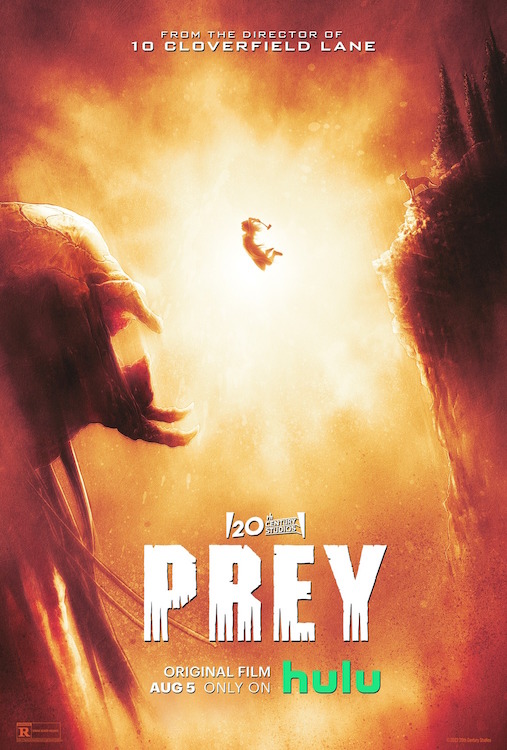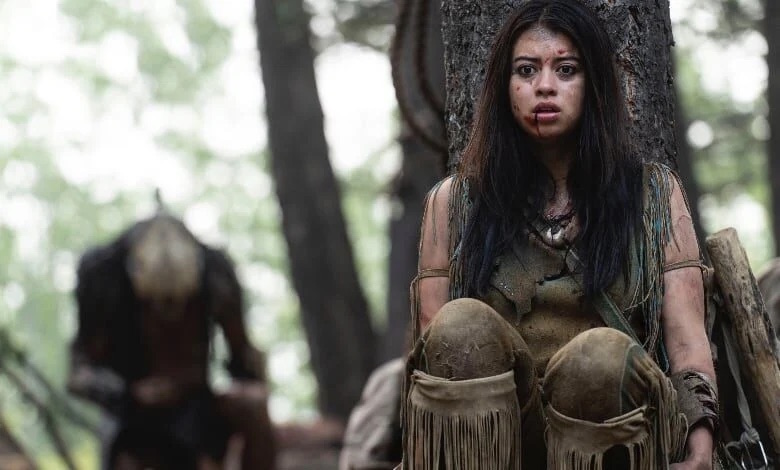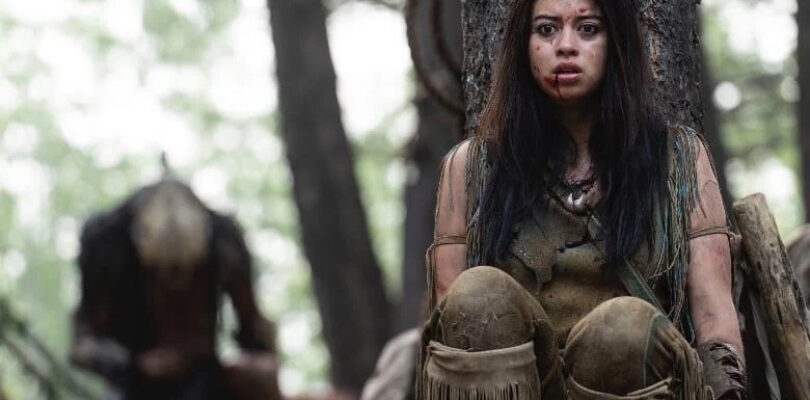The hook of the “Predator” franchise is one of the greats in sci-fi cinema: What if a big game hunter from another world came to Earth and set its sights on man? The concept boasts one of the most iconic cinematic monsters and inspired at least one classic film in John McTiernan’s 1987 original. But subsequent attempts to bring the “ugly motha” back — whether in the three sequels to McTiernan’s or the two crossovers with the “Alien” franchise — have failed to generate much excitement or capture the mix of tension and adrenaline that came with that first showdown.
‘The original film finally gets a worthwhile successor with Prey, a prequel from director Dan Trachtenberg (2016’s 10 Cloverfield Lane) that remembers what makes the big bad so scary and gives it a human adversary just as cunning and relentless. By relocating the story to the Great Plains in the 1700s, Trachtenberg and co-writer Patrick Aison distill the franchise’s story to its essence and deliver a focused and tense summer thrill ride.

Naru (Amber Midthunder) is a member of the Comanche Nation eager to prove herself as a capable hunter, much to the derision of most the men in her tribe except for her brother Taabe (Dakota Beavers). When she sets off to pursue what she believes is a mountain lion that attacked a friend, Naru comes face-to-face with a sport hunter from another world that’s eager to adorn its ship with some more human skulls.
The “Predator” films have always gained a great deal from their use of location as a place to play with the concept of pitting elite hunters against each other. The jungle in the 1986 film was a perfect playground for the Predator to tear through a group of overly macho men, and the sequel’s hellish Los Angeles of the future provided a sweaty, grimy backdrop for a cop to hunt the monster.
By stripping away any modern weaponry or tools, Prey ups the stakes, pitting Naru against an assailant that is not just from another world, but from an advanced one, with guns, tools, and weaponry that are hundreds of years ahead of her time. Even without the danger posed by an extraterrestrial threat, Naru’s world is a fraught one, with French trappers eager to wipe out Native Americans and a forest full of snakes, bears, and wolves eager to take a bite. A sequence in a tree with a mountain lion is just as tense and terrifying as any alien encounter.
Trachtenberg has fun playing with this setting, both through the tense moments where Naru navigates the wilderness and the fist-pumping scenes of the Predator tearing its way up the food chain. The setting allows for a backdrop that is wild and untamed, as well as gorgeous; this is the first film in the “Predator” franchise where the cinematography might be just as impressive as the stunt works.
As with the first Predator, Prey tips its hands a bit too much in its opening minutes, as Naru observes a spaceship descending through the clouds. It might have been more fun for the film to reveal the iconic monster as a surprise, but Trachtenberg likely knows marketing never would have let that happen. Instead, he has fun with several sequences showing the Predator stalking his way through the woods, observing his prey and then launching into the attack.
Midthunder has big shoes to fill as the lead in an action series famously fronted by Arnold Schwarznegger. But she depicts Naru as a thoughtful, focused and fierce hunter, and a thread about Naru not being viewed as a threat by the Predator dovetails nicely with her determination to be seen as an equal by the members of her tribe. Prey eschews Predator’s over-the-top masculinity in favor of a hero who’s a bit more unsure of herself and eager to go toe-to-toe with a threat she fears may be beyond her. The other supporting characters are largely just Predator fodder, but Midthunder is a welcome addition to the franchise.
The Predator itself is a 1980s icon and Trachtenberg takes a risk by altering its traditional look. This Predator is a bit more lithe and feral, sporting a helmet that looks like it’s made of bone instead of the chrome mask seen in the previous films. The result is a more ferocious and fierce threat, and the advances in special effects mean that the film can rely a bit more on the Predator in action than its predecessors.

Amber Midthunder in “Prey.” Photo by David Bukach/ HULU – © 2022 20th Century Studios. All Rights Reserved.
Trachtenberg delivered a taut, claustrophobic thriller with 10 Cloverfield Lane and he expands his range well here without sacrificing tension. Early Predator attacks keep the monster in the shadows, keeping the carnage offscreen or obscured to heighten the suspense. He leans into the iconography where necessary, but doesn’t overdo it. The Predator can overtake a bear without much more than its own two limbs; as the scope widens and it attacks humans, the familiar laser guns, bombs, spears, and discs come back into play, honoring the originals without feeling a need to complicate the mythology, go big at the expense of the suspense or deliver unnecessary callbacks (although some may groan at the use of one of the original’s most iconic lines). There’s a bit too much reliance on computer-generated blood and carnage, which lacks the tactile nature of the violence in the original. But fans should be pleased with the numerous sequences of the monster tearing through groups of trappers and warriors.
The film culminates in an extended showdown between Naru and the monster, and it’s a tense, smart and brutal reimagining of the final jungle throw-down in the first movie. That film, however, managed to give its Predator a sense of personality that this film lacks; that Predator got frustrated, gloated and cheated to try and defeat Arnold. This one is just a step away from a Terminator. It doesn’t make the final battle less ferocious, but it does lack some of the charm of its predecessor, and lacks the sense of respect both hunters showed each other in the first movie that made it a bit more than just a simple monster mash.
But if Prey lacks some of the greatness of the first Predator movie, Trachtenberg and Midthunder can take solace that they have created the first truly good follow-up in the franchise. Prey is debuting as a streaming exclusive on Hulu, and perhaps the best compliment it can be given is that it’s a movie that deserves to be seen in a theater on a hot summer night with cheering crowds. [box_info]WHERE TO WATCH (powered by JustWatch)
[/box_info]

